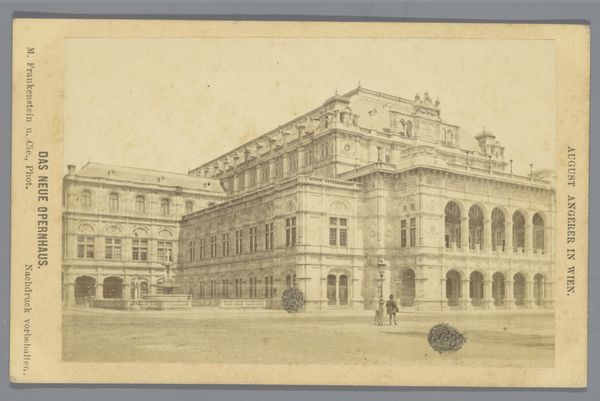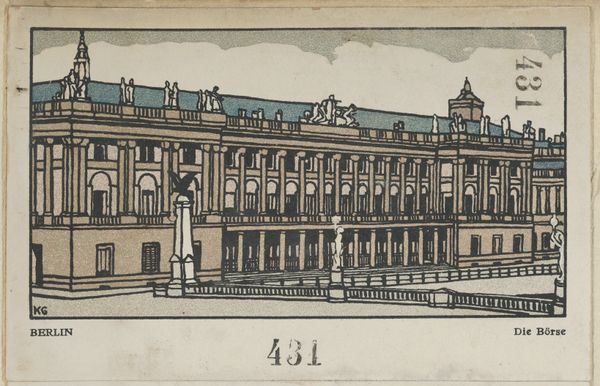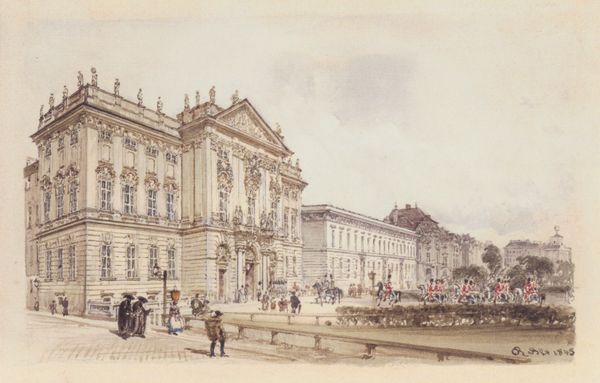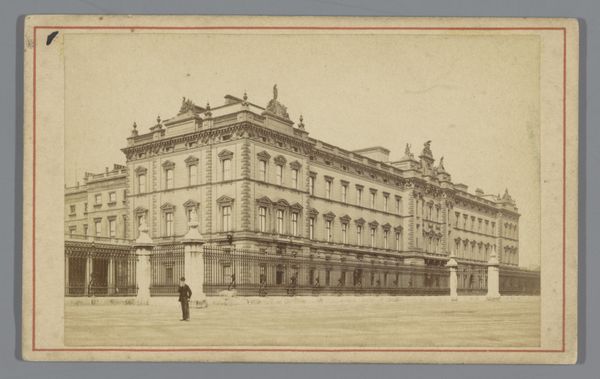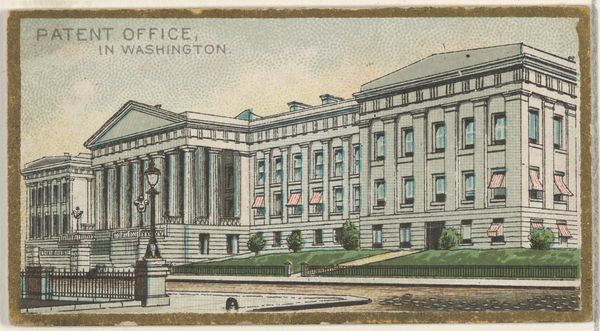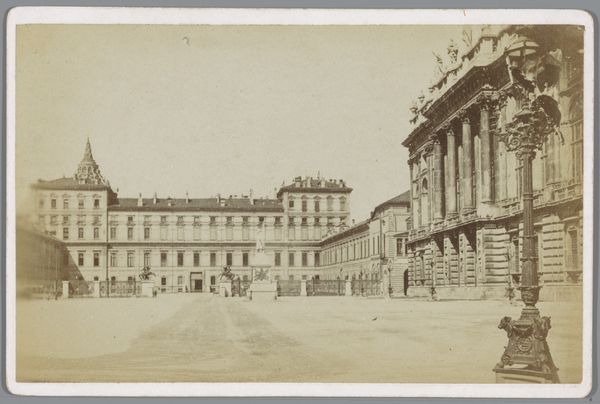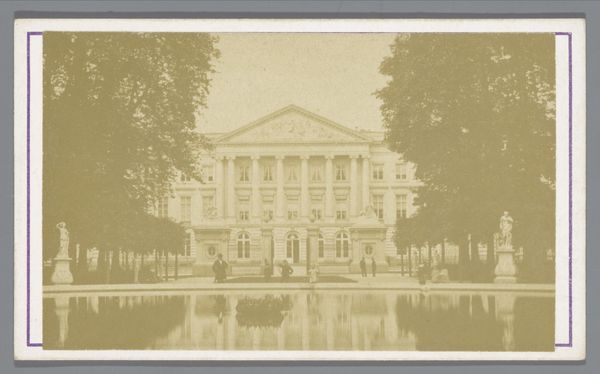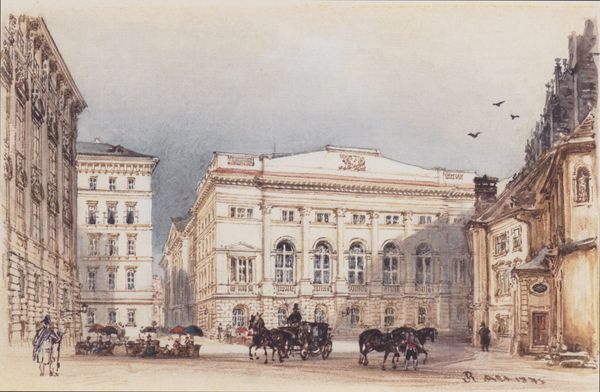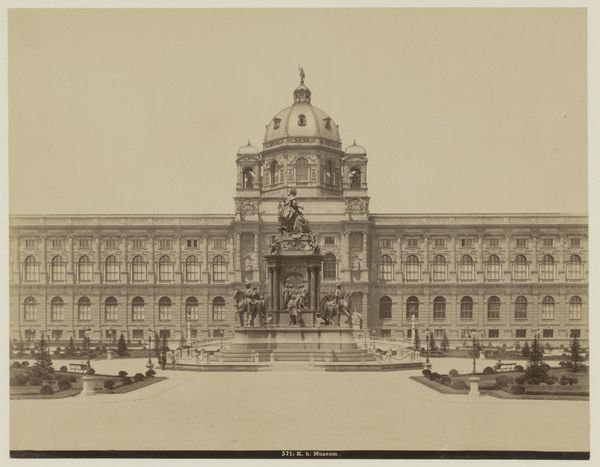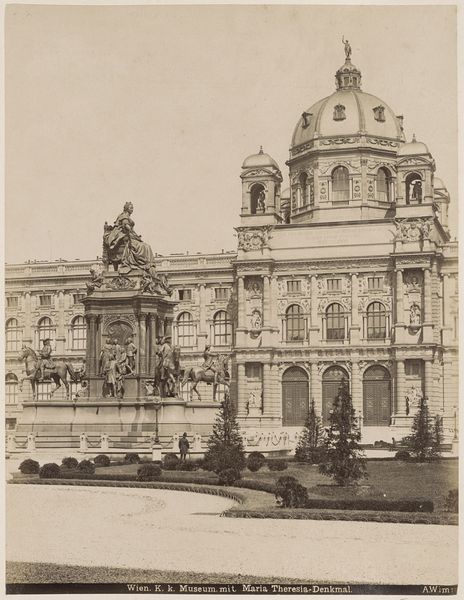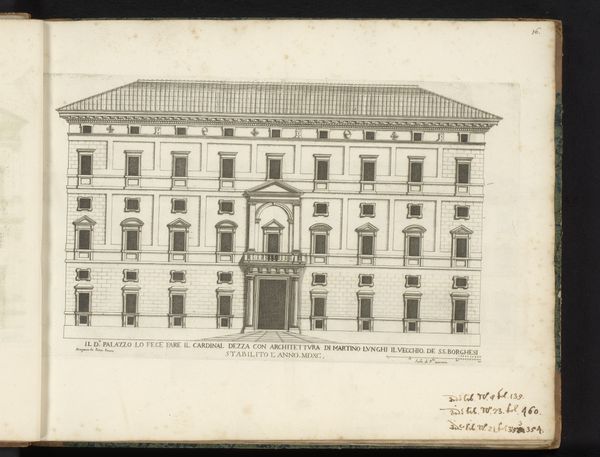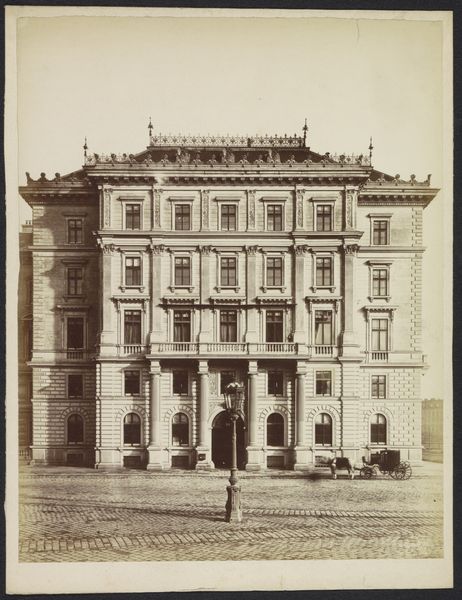
Capitol of Oregon in Salem, from the General Government and State Capitol Buildings series (N14) for Allen & Ginter Cigarettes Brands 1889
0:00
0:00
drawing, coloured-pencil, print
#
drawing
#
coloured-pencil
#
neoclassicism
# print
#
landscape
#
coloured pencil
#
cityscape
#
watercolour illustration
#
academic-art
#
building
Dimensions: Sheet: 1 1/2 x 2 3/4 in. (3.8 x 7 cm)
Copyright: Public Domain
Curator: Ah, the Oregon State Capitol Building as rendered by Allen & Ginter in 1889. There's something profoundly satisfying about its rigid neoclassical structure. Editor: I agree it presents as solid. However, seeing it here on a tobacco card, makes me think about the raw materials required to produce it. What kind of labour underpinned that grand edifice? Curator: That’s certainly one way of seeing it. But consider the architectural precision and the visual hierarchy. The imposing columns, the balanced façade... these elements convey stability and permanence. Observe how the artist employed colour pencil and print. Do you notice how those medium constraints further delineate line and form? Editor: It's undeniably skilled draftsmanship. But even the act of crafting this miniature becomes an interesting case study in commodity production and how value becomes abstracted through consumer objects. What sort of resources went into making coloured pencils at the time? Was it fair labour? And how does the act of selling it change how people perceive their Capitol Building? Curator: While I appreciate your line of thought, diverting it to broader production practices dilutes the focused experience one gets in aesthetic contemplation. The artwork provides an engagement, for example, in civic ideals expressed through architectural formalism. And the very reduction of space concentrates design down to pure elements of geometric perfection. Editor: The labour is right there though. From the harvesting of tobacco leaves to the hand that operated the printing press—each stage implicates societal forces. The "pure elements of geometric perfection," as you termed them, are still products extracted from labour networks and resources. Curator: Perhaps. Still, focusing solely on production bypasses the more immediate experience of design and form in generating an aspirational aesthetic experience through spatial illusion. One cannot reduce architectural visualization solely to its materiality. It functions, like this tiny object, as an idealistic rendering of governmental grandeur. Editor: I still consider how deeply enmeshed social issues are within art history, it encourages different critical appraisals of subjects otherwise framed simply under “grandeur." Even promotional items give opportunity. Curator: Perhaps it simply illustrates art's inherent tension between the ideal and the real. Editor: Precisely. By examining the latter, we can start gaining critical perspectives on that same "ideal" portrayed in that rendering.
Comments
No comments
Be the first to comment and join the conversation on the ultimate creative platform.
